So it was nice to not have to wake up too early to drive out to the Mesquite Flat Sand Dunes at sunrise. The sand dunes seemed to be one of the most popular areas of the park, at least judging by the thousands of footprints in the sand. It looked cratered, like the surface of the Moon.
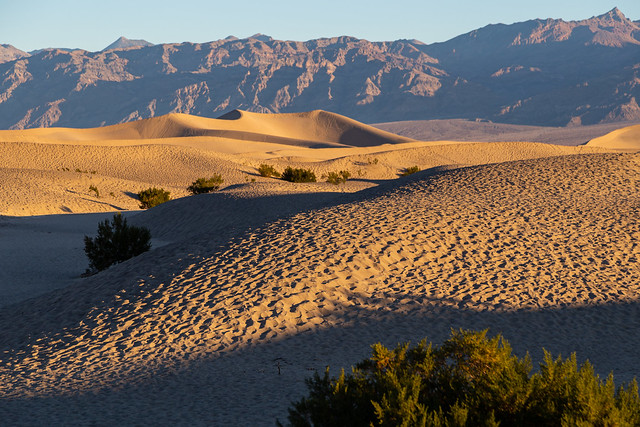
The National Park Service says that it takes three ingredients to form the dunes: sand (obviously), wind, and a natural barrier to keep the sand in place.
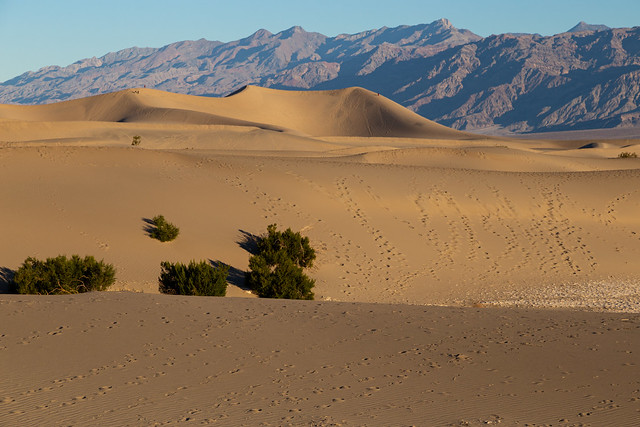
The sand at Mesquite Flat is made up of eroded bits of quartz and feldspar, and came from the Cottonwood Mountains to the north of the dunes. The wind picks up the sand and carries it to the valley, where it is blocked from escaping by the mountains to the south of the dunes.


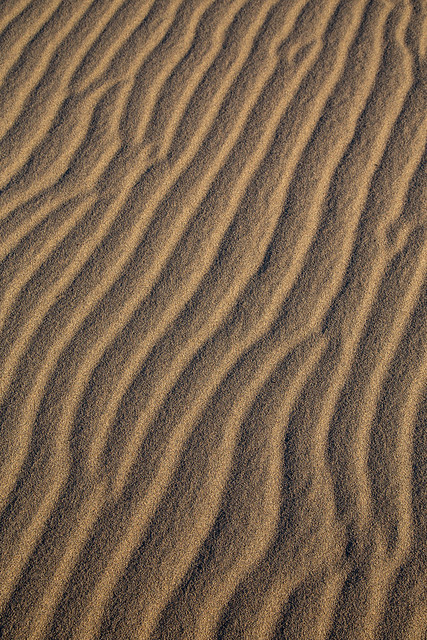
In between the dunes you can see cracked mud on the ground. This is actually the clay remnants of an ancient lakebed. You would be able to see more of it, but the sand dunes have covered most of it up.
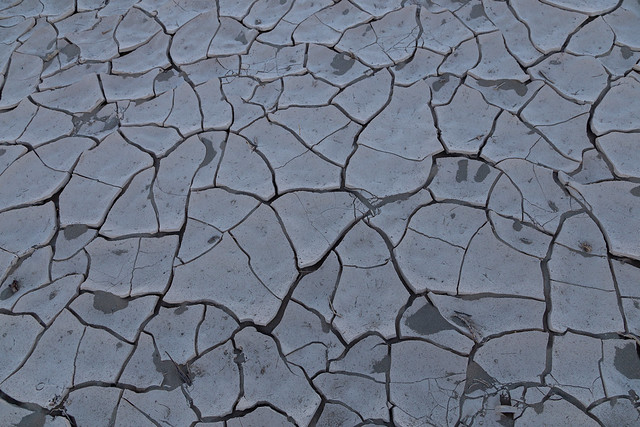
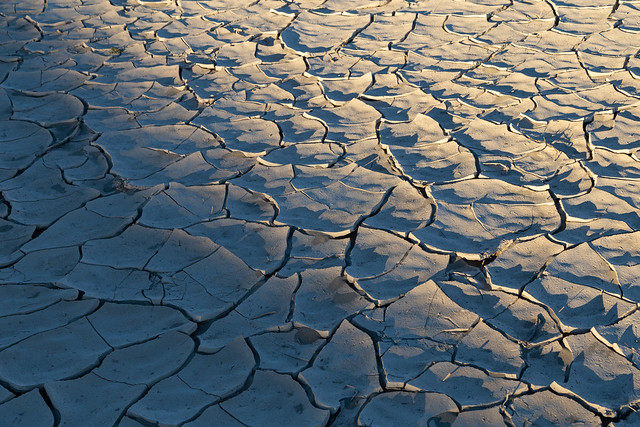
These sand dunes have been used in lots of movies. And of course, they filmed some here for Star Wars. I can only imagine the film crew having to carry R2-D2 up over the dunes. At 0:59 in this video, you can easily recognize the red-colored mountains of Death Valley in the background of the shot.
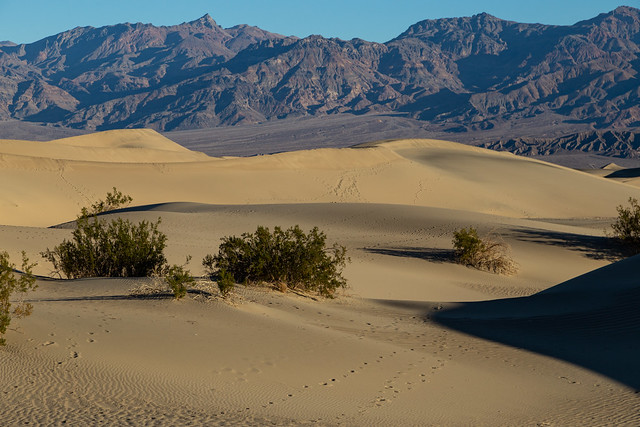
The tallest sand dune at Mesquite Flat is called Star Dune and rises to a height of about 140 feet.

We didn't walk to it, instead we went a different direction where there would be fewer footprints. Managed to find a few places without any prints (or with a small enough amount that they could easily be photoshopped out).
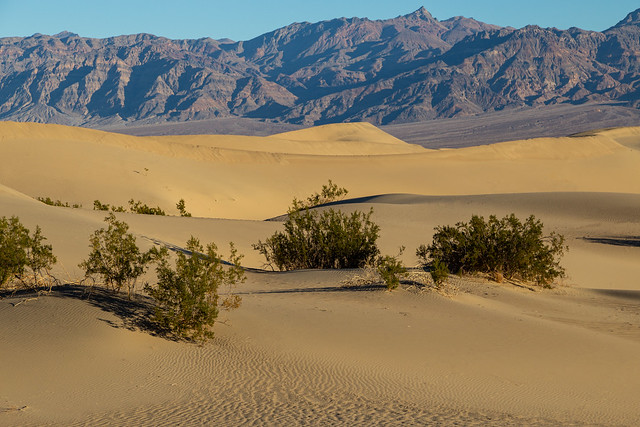
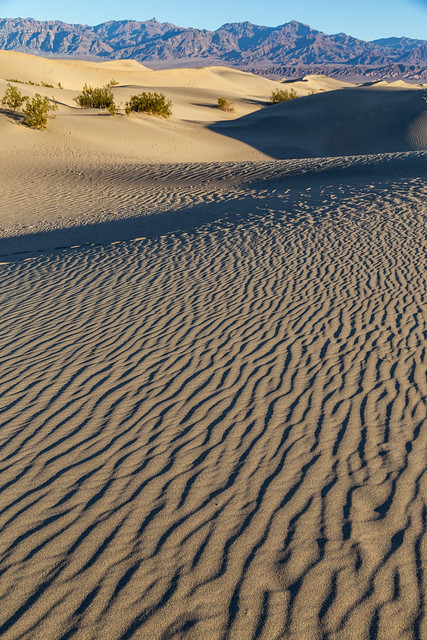
I was a little annoyed at all the footprints, and at all those careless people who had messed up my shots. Then I realized that all my footprints that morning were ruining some future photographer's pictures. Sorry!
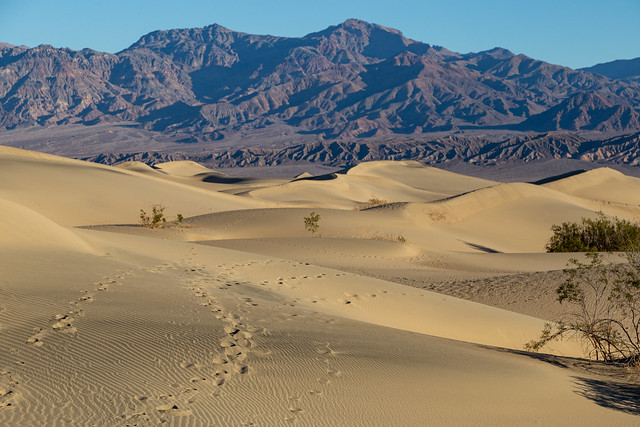
There are a few other places within Death Valley where the conditions are just right to form sand dunes. Mesquite Flat is the largest by area, but the other places have dunes that are taller. I wasn't sure if the roads to those areas were open while we were there.

The Mesquite Flat dunes are named after the many mesquite trees that grow here. The trees have adapted to the sand, they twist as they grow to avoid being buried by the sand. The mesquite bean pods were a traditional food for the Timbisha Shoshone, the first people to live in Death Valley.
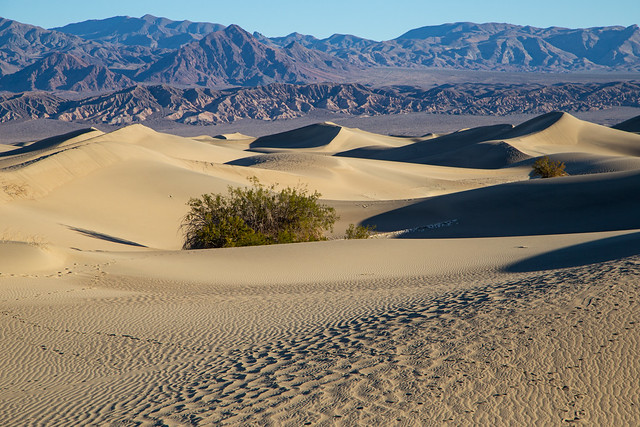
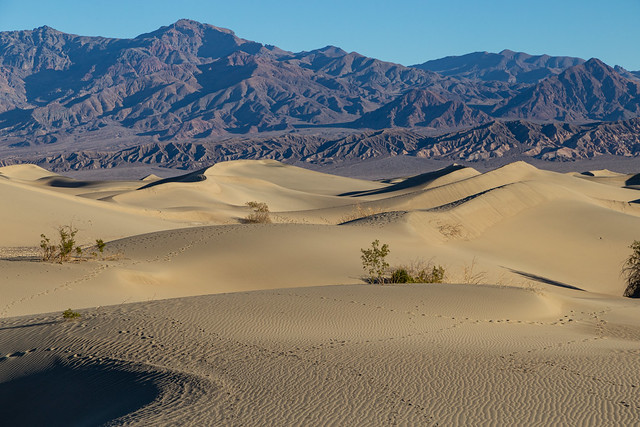

We made it back to the car and was about to drive off when we saw a small dirt road that ran up the side of the mountain. Curious to see where it went, we headed that way. It went to a small parking area, which provided a good elevated view of the sand dunes. Seeing it from here really showed the scale of the dunes, and how they have spread across the valley.

And it was nice to be so far away that you couldn't see all the footprints on the dunes!

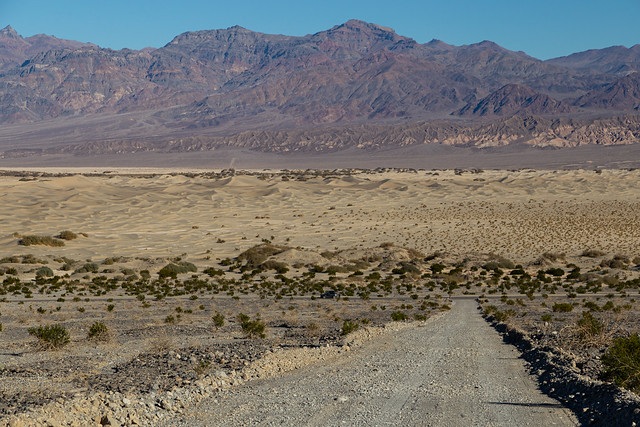


No comments:
Post a Comment